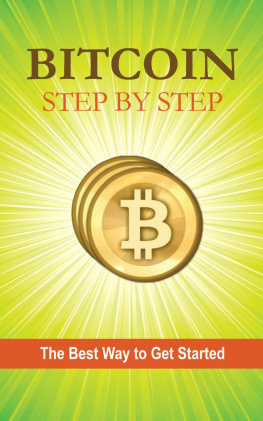Harris Brakmić - Bitcoin and Lightning Network on Raspberry Pi: Running Nodes on Pi3, Pi4 and Pi Zero
Here you can read online Harris Brakmić - Bitcoin and Lightning Network on Raspberry Pi: Running Nodes on Pi3, Pi4 and Pi Zero full text of the book (entire story) in english for free. Download pdf and epub, get meaning, cover and reviews about this ebook. year: 2019, publisher: Apress, genre: Computer. Description of the work, (preface) as well as reviews are available. Best literature library LitArk.com created for fans of good reading and offers a wide selection of genres:
Romance novel
Science fiction
Adventure
Detective
Science
History
Home and family
Prose
Art
Politics
Computer
Non-fiction
Religion
Business
Children
Humor
Choose a favorite category and find really read worthwhile books. Enjoy immersion in the world of imagination, feel the emotions of the characters or learn something new for yourself, make an fascinating discovery.
- Book:Bitcoin and Lightning Network on Raspberry Pi: Running Nodes on Pi3, Pi4 and Pi Zero
- Author:
- Publisher:Apress
- Genre:
- Year:2019
- Rating:4 / 5
- Favourites:Add to favourites
- Your mark:
Bitcoin and Lightning Network on Raspberry Pi: Running Nodes on Pi3, Pi4 and Pi Zero: summary, description and annotation
We offer to read an annotation, description, summary or preface (depends on what the author of the book "Bitcoin and Lightning Network on Raspberry Pi: Running Nodes on Pi3, Pi4 and Pi Zero" wrote himself). If you haven't found the necessary information about the book — write in the comments, we will try to find it.
Compile and run Bitcoin full nodes, lightning nodes, and user-friendly web-apps that help abstract the complexities of Bitcoin. This book not only explains the tools and techniques to help readers build their own banks and banking apps, but it also tells a story. Starting with the origins of Bitcoin--what it is and why we need it--find out what its strengths and limitations are. Understand the nature of mining and why so much energy is put into it. The blockchain itself will be reviewed, as well, and compared to other options such as a normal SQL database or a simple spreadsheet.
With this book, you can control Bitcoin wallets via RPC commands on a Raspberry Pi. Configure, compile, and run two implementation of the Lightning Ntework-compatible daemons: LND and c-lightning. And employ user-friendly web apps that abstract the complexities of Bitcoin/Lightning-Network.
The Internet of Information is currently transitioning to the Internet of Things, which in turn may well be followed by the Internet of Value (or Money). However, there is no evolution without happy users and Bitcoin will never reach the same heights like the original internet without having offered useful and easy to use tools. Just like nobody would ever want to use UUCP to send messages via web the same applies to current cryptocurrency tools. These are hard to use and very unforgiving. But, the evolution doesnt stop here and many easy-to-use tools are already available. We will meet some of them when building apps for the Lightning Network, a new technology running on top of Bitcoins blockchain that makes it possible to generate billions of transactions within a single second.
What Youll Learn- Control Bitcoin wallets via console RPC commands
- Run two implementation of the Lightning Network compatible daemons
- Simplify the complexities of Bitcoin and the Lightning network with user-friendly web apps
This book is for Makers familiar with the basics of Linux command line processes.
Harris Brakmić: author's other books
Who wrote Bitcoin and Lightning Network on Raspberry Pi: Running Nodes on Pi3, Pi4 and Pi Zero? Find out the surname, the name of the author of the book and a list of all author's works by series.

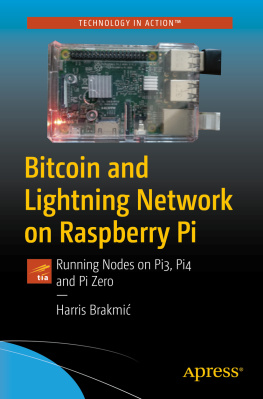
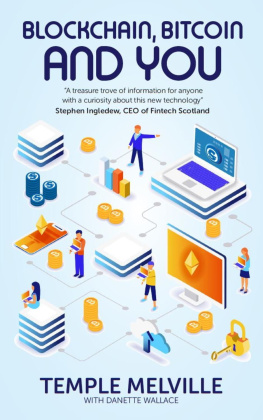

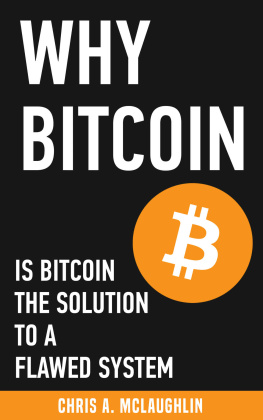
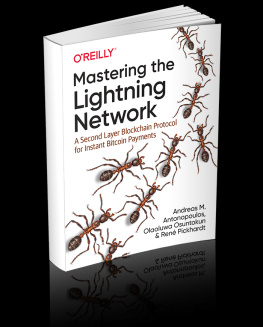


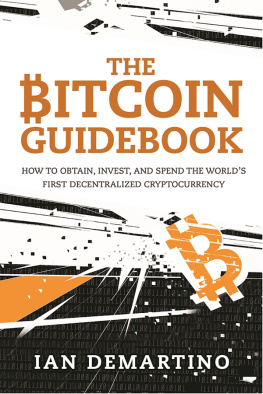
![Harish Kumar Garg [Harish Kumar Garg] - Hands-On Bitcoin Programming with Python](/uploads/posts/book/119676/thumbs/harish-kumar-garg-harish-kumar-garg-hands-on.jpg)
